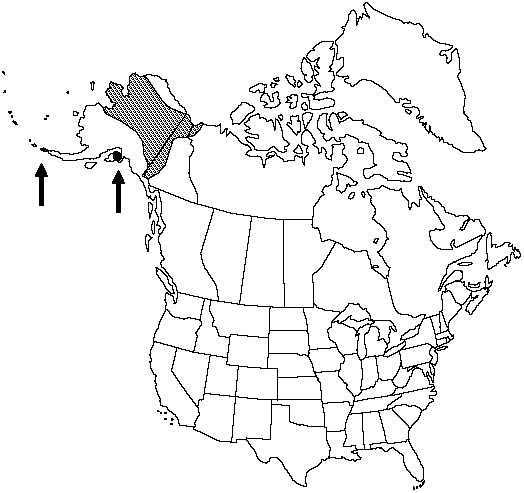Difference between revisions of "Selaginella sibirica"
Hedwigia 39: 290. 1900.
FNA>Volume Importer |
GeoffLevin (talk | contribs) m (Fixed basionym parsing to match printed version) |
||
| (4 intermediate revisions by 2 users not shown) | |||
| Line 9: | Line 9: | ||
|common_names=Siberian spike-moss | |common_names=Siberian spike-moss | ||
|basionyms={{Treatment/ID/Basionym | |basionyms={{Treatment/ID/Basionym | ||
| − | |name=Selaginella rupestris | + | |name=Selaginella rupestris (Linnaeus) Spring forma sibirica |
| − | + | |authority=J. Milde | |
| + | |rank=species | ||
|publication_title=Fil. Eur., | |publication_title=Fil. Eur., | ||
|publication_place=262. 1867 | |publication_place=262. 1867 | ||
| Line 37: | Line 38: | ||
-->{{#Taxon: | -->{{#Taxon: | ||
name=Selaginella sibirica | name=Selaginella sibirica | ||
| − | |||
|authority=(J. Milde) Hieronymus | |authority=(J. Milde) Hieronymus | ||
|rank=species | |rank=species | ||
|parent rank=subgenus | |parent rank=subgenus | ||
|synonyms= | |synonyms= | ||
| − | |basionyms=Selaginella rupestris | + | |basionyms=Selaginella rupestris forma sibirica |
|family=Selaginellaceae | |family=Selaginellaceae | ||
|habitat=Dry, alpine, rocky slopes, rock crevices, granite rock, limestone boulders, sandstone, bare open grassy tundra | |habitat=Dry, alpine, rocky slopes, rock crevices, granite rock, limestone boulders, sandstone, bare open grassy tundra | ||
| Line 51: | Line 51: | ||
|publication year=1900 | |publication year=1900 | ||
|special status= | |special status= | ||
| − | |source xml=https:// | + | |source xml=https://bitbucket.org/aafc-mbb/fna-data-curation/src/2e0870ddd59836b60bcf96646a41e87ea5a5943a/coarse_grained_fna_xml/V2/V2_521.xml |
|genus=Selaginella | |genus=Selaginella | ||
|subgenus=Selaginella subg. Tetragonostachys | |subgenus=Selaginella subg. Tetragonostachys | ||
Latest revision as of 16:57, 7 December 2022
Plants on rock or terrestrial, forming discrete long-spreading mats or seldom cushionlike mats. Stems radially symmetric, creeping or decumbent, not readily fragmenting, irregularly forked, without budlike arrested branches, tips straight; main stem indeterminate, lateral branches conspicuously or inconspicuously determinate, often strongly ascending, 1–3-forked. Rhizophores borne on upperside of stems, throughout stem length, 0.2–0.37 mm diam. Leaves monomorphic, in alternate pseudowhorls of 5, tightly appressed, ascending, green, linear-lanceolate to narrowly lanceolate, 2–3.5 × 0.35–0.5 mm (smaller on lateral branches); abaxial ridges prominent; base cuneate and decurrent to rounded and adnate on young lateral branches or buds, glabrous or sometimes pubescent; margins long-ciliate, cilia transparent, spreading to ascending, 0.07–0.17 mm; apex keeled, truncate in profile, obtuse to attenuate; bristle white to whitish or transparent, puberulent, 0.45–0.8 mm. Strobili solitary, 0.5–2.5 cm; sporophylls deltate-ovate to ovate-lanceolate, abaxial ridges well defined, base glabrous, margins ciliate, apex truncate in profile, bristled. 2n = 18.
Habitat: Dry, alpine, rocky slopes, rock crevices, granite rock, limestone boulders, sandstone, bare open grassy tundra
Elevation: 130–2400 m
Distribution

N.W.T., Yukon, Alaska, Asia in Japan and the former Soviet republics.
Discussion
Selaginella sibirica is most closely allied to S. rupestris. In addition to differences noted in the descriptions, it can be distinguished from S. rupestris by the numerous marginal cilia on the leaves and by the transparent sporophyll margins; S. rupestris has a variable number (usually few) of marginal cilia and nontransparent sporophyll margins.
Selected References
None.